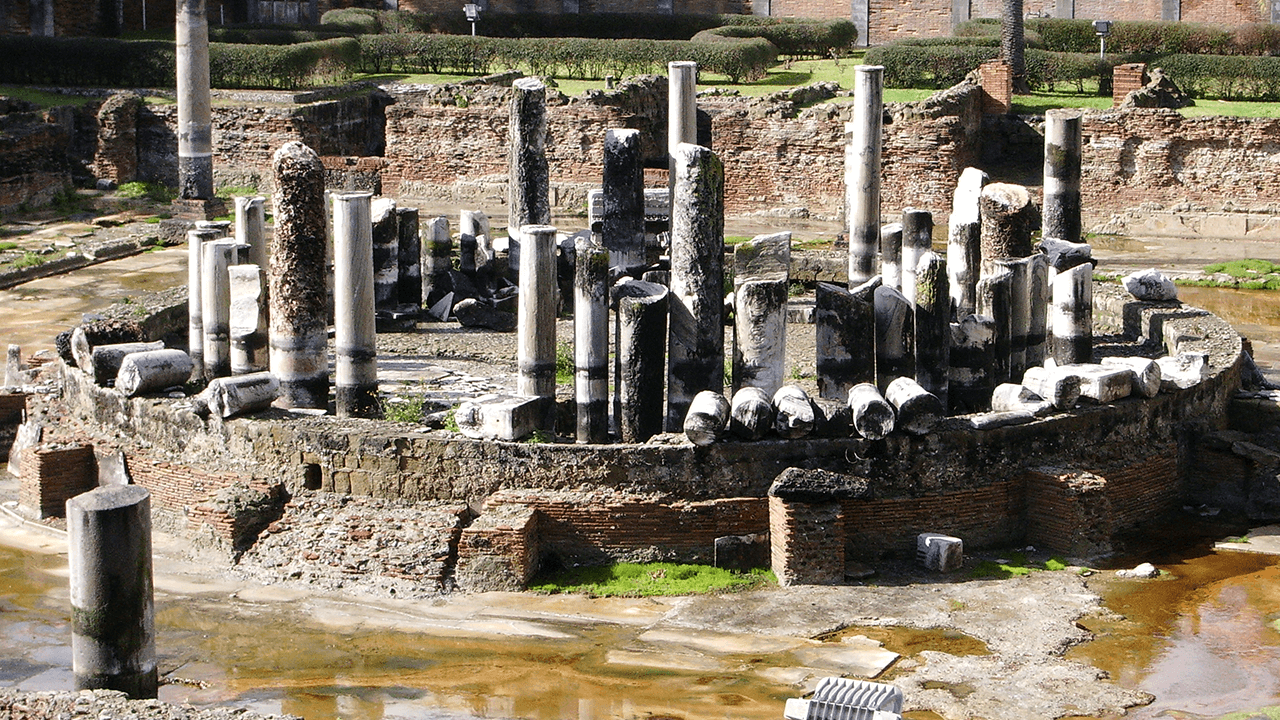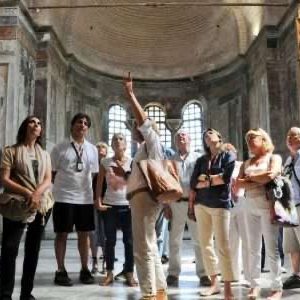Serapis Temple in Ephesus: A Testament to the Cultural Connection with Egypt
The Temple of Serapis is one of the most intriguing structures in the ancient city of Ephesus. Built in the 2nd century AD, this temple is dedicated to Serapis, an Egyptian deity symbolizing the cultural and commercial connection between Ephesus and the port city of Alexandria in Egypt. Although its construction appears to have remained incomplete, the temple provides valuable insights into the relationship between these two civilizations.
History and Construction of the Temple of Serapis
The Temple of Serapis was designed as a monumental space for the worshippers of this Egyptian deity, who also appears in inscriptions alongside Artemis, the patron deity of Ephesus. The garland linking Serapis and Artemis symbolizes peace and coexistence between the two cultures. Construction of the temple likely began in the 2nd century AD, but some evidence suggests it was never fully completed.
Materials and Design
Inside the temple, fragments of a statue made of Egyptian granite were found, reinforcing the connection to Egypt and the importance of Serapis in the spiritual life of the Ephesians. The inscriptions and design of the temple reflect the influence of Alexandria, one of the most influential cities of the ancient world, renowned for its trade and culture.
Commercial Relations Between Ephesus and Alexandria
Ephesus, as an important port city, maintained close trade relations with Alexandria. This connection facilitated not only the exchange of goods but also the transfer of ideas and religious practices. The Temple of Serapis is tangible evidence of how these commercial relationships shaped the culture of Ephesus.
Egyptian Influence in Ephesus
The presence of a temple dedicated to Serapis in Ephesus demonstrates how Egyptian religious beliefs were integrated into Ephesian life. The combination of local architectural elements with Egyptian materials and symbolism reflects a unique cultural interaction.
Conversion to Christianity
With the rise of Christianity, the Temple of Serapis was transformed into a church. During this period, Christian structures such as a baptismal font were added, remnants of which can still be seen today. This change symbolizes the religious transition in Ephesus, from paganism to Christianity.
The Baptismal Font and the Church
The addition of the baptismal font highlights the importance of the temple during the Christian period. This space, once a place of worship for Serapis, became a central site for the Christian community, marking the continuity and adaptation of sacred spaces in Ephesus.
The Symbolism of Serapis and Artemis
One of the temple’s most notable features is the depiction of Serapis alongside Artemis. This union symbolizes the coexistence and harmony between Egyptian and Greek cultures, reinforcing the idea of Ephesus as a melting pot of cultural and religious influences.
Serapis: A God of Peace and Prosperity
Serapis was regarded as a figure of unity and peace, and his worship in Ephesus reflects the desire for cultural integration in a city that served as a bridge between East and West. His association with Artemis, the most revered deity of Ephesus, underscores the significance of this symbolic connection.
Tips for Visiting the Temple of Serapis
- Location: The Temple of Serapis is located near the main attractions of Ephesus, making it easily accessible.
- Recommended Time: It is best to visit early in the morning or at sunset to enjoy better lighting and avoid high temperatures.
- Respect the Site: As an archaeological site, visitors are encouraged to respect the designated areas and avoid touching the remains to help preserve them.
Conclusion
The Temple of Serapis is a fascinating example of cultural and religious influence in ancient Ephesus. From its monumental design to its transformation into a church, this temple encapsulates centuries of history and the connection between two of the most influential civilizations of the ancient world. Visiting this site is an opportunity to explore Ephesus’s legacy as a center of cultural and religious exchange and to reflect on how these interactions shaped its unique history.














3 thoughts on “Serapis Temple”
★★★★★
I was blown away by everything ‘Serapis Temple’ has to offer. Definitely a place to return to in the future.
★★★★★
Looking for an authentic and enriching experience? ‘Serapis Temple’ is the place to be! Absolutely worth the visit.
★★★★★
Learning about and visiting ‘Serapis Temple’ was both fun and educational. Everyone should experience this!